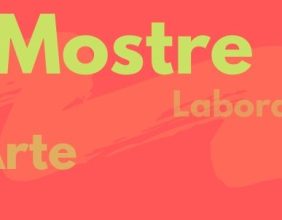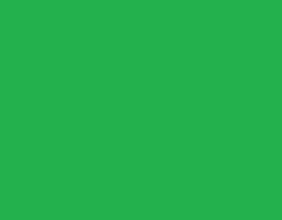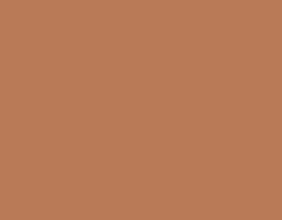The projects of Around Academy Gallery proceed with success: The latest, still in progress, is a series of workshops for young photographers and lovers in which Sandro Iovine speaks of photography and image reading.
Sandro Iovine is a journalist, even if he does not seem to appreciate the definition, curator of books and exhibitions, though he does not like the word art, and teacher.
As a true expert in the field, he speaks with irreverent tone of what is presented as “art”, of the condition of young Italian photographers and of the “humanity” he searches in a photograph.
Let’s start with an introduction…
Name Sandro Iovine, son of Odin and brother of Thor. The part after the comma is not true, but it does give a certain tone to the character and especially to the… question.
Profession Since I find in this pocket a pass of Journalists and since I contribute every month to make three or four magazines arrive on newsstands, I suppose I should say I am a journalist. But it is not a statement that gratifies me particularly.
Age Fifty-two years. Unfortunately.
Since when in the art world? Unless we assume the absence of a prolonged state of consciousness along more or less a dozen decades, I am not aware of ever having been in the art world. The word art always makes me shudder, not because of what it means or should mean, but for the use to which it is often distorted. It is frequently abused and raped by who, especially in the field of photography, not always has something to say.
Why in the world? Given the previous answer, I think we can go to the next question. At the most, I might add that the professional contingencies are forcing me to start a confrontation with the art world so much as that of his trade.
Why photography? Probably because I deal with it since I was nine years old. I grew up along with photography and its charm, in spite of everything, still haven’t left me. Maybe it’s become part of my DNA.

Talking about the art world in general…
The gallery or museum that surprised you the most?
The Guggenheim in Bilbao for the interaction between works, space and movement of the visitors (I am myself a victim of suggestion of the thought of Merleau-Ponty). Remarkable for the liveliness of the proposals also the C / O Berlin. But, frankly, who do you think will be interested in my opinion?
The city “lighthouse” for contemporary art?
If we limit ourselves to photography and with feelings I cannot be objective: Paris! But today we must keep in mind Beijing, and admitting it, after attending for a long time Japan and its culture, is almost painful as it would be for a Japanese. The visit I made a few years ago to District 798 has remained in my heart for the air that is breathed in every where in the former factory, now converted into an art center.
A character / reference in the world of art as it considers and appreciates and why?
Bearing in mind that my interests are focused mainly on photography, in the contemporary scene the character I find most interesting is Joan Fontcuberta, great disturber of the iconic middle-class peace and man of exquisite humanity.
A photographer from the past you prefer and why?
The name of Robert Frank comes first to my mind. Although it’s hard to place it only in the past and not the present, and because fortunately he is still with us, and because the scope of his work in my opinion transcends time. I’m moved in front of its glossy projectuality conjugated with the ability to transform personal suffering into communication . Complimented by an intense and prolonged reflection on the medium, which went through the photo journalism expressions recognized in the art world.
Let’s get to our focus, young artists.
The most promising young photographer you met in your career?
I could name many young photographers that I met and followed in the field of photojournalism before they became international stars of that world: Francesco Zizola, Paolo Pellegrin, Riccardo Venturi and recently Fausto Podavini. The real talents are rare and to identify their capacity when not yet expressed is not always easy. Many would have exceptional technical tools, but they end up getting lost at the level of personality.
What do you look for in a photograph?
The man or woman who is behind the work, intellectual honesty (often fugitive) and ethical sense. Given that so far I have been involved in photography-related levels of informative journalism, I must sadly admit that the last two qualities I mentioned are becoming increasingly difficult to find. In this part the responsibility is to be found in a more frequent contamination between images created to inform and art world, or more precisely, the art trade.
What would young emerging artists need, particularly photographers?
To be put in a position to understand the need to acquire the basic techniques that they rarely possess. You should also give them the opportunity to test themselves by presenting the public debate without necessarily being scions of dynasties millionaires.
A passionate advice to a young artist who is taking the first steps into this world?
If you want to maintain the dignity and the independence of thought, the advice is to enter another career or to emigrate. If you are willing to prostitute yourself, at least make sure you find someone who is willing to pay an adequate amount to justify the waiver of your dignity.
Today.
The workshops on photography and reading the image with Around Gallery: how were the first two meetings?
In general, those meetings are (and they want to be) a bit destabilizing for the participants. These, in general, are accustomed to a vision of photography to comply with a general perception that reduces everything to a mere technology. In addition, there are many clichés, almost always unfounded, on photography. My goal is to try to remove them. The first meetings are the pars destruens. Once the fog begins to rebuild the models of reading.
What will the next three talk about?
The two subsequent meetings will provide additional tools to deal with the reading of the images and the last will be my reading of The Americans by Robert Frank, basically a demonstration of how to apply what has been explained in the previous four days.
www.sandroiovine.com: what it is and what should we expect to find?
It is (or perhaps I should say was) the blog where I poured my reflections on the world of photography, with particular reference to the ethics of photojournalism. At the moment it’s a bit in stop because the commitments will not leave me the time to write things that make any sense. But I think that it will soon turn to be active.What you should expect to find? A poor alignment to the establishement and an even less inclined to diplomacy in the exposition of what I think.

The workshop on photography and reading of the image is coming with three other events:
– READ THE UNIFICATION OF figural Gestalt (03/17/13)
– READ THE PICTURE (24/03/13)
-READ THE BOOK “THE AMERICANS” DI Robert Frank (07/04/13)
For those who missed the first two events … here is a video presentation!
La galleria d’arte pop up di Milo Sciaky, tutta dedicata alla fotografia, continua a riservarci sorprese.
Il progetto di Around Gallery Academy procede con successo: l’ultimo progetto, ancora in corso, è un ciclo di workshop dedicati a giovani fotografi e ad appassionati in cui Sandro Iovine ha parlato di fotografia e lettura dell’immagine.
Sandro Iovine è un giornalista, anche se non sembra apprezzare la definizione, curatore di libri e di mostre, anche se non ama la parola arte, e insegnante.
Da vero esperto nel campo, ci parla con tono dissacrante di ciò che viene presentata come “arte“, della condizione dei giovani fotografi italiani e dell'”Umanità” che ricerca in una fotografia.
Sul personale
Nome Sandro Iovine, figlio di Odino e fratello di Thor. La parte dopo la virgola non è vera, ma conferisce un certo tono al personaggio e soprattutto alla… domanda.
Professione Dal momento che in tasca mi ritrovo un tesserino dell’Ordine dei Giornalisti e ogni mese contribuisco a fare in modo che tre o quattro riviste arrivino in edicola, suppongo che dovrei dire di essere un giornalista. Ma non si tratta di un’affermazione che mi gratifica particolarmente.
Anni Cinquantadue. Purtroppo.
Da quanto nel mondo dell’arte? A meno di non ipotizzare un prolungato stato di assenza di coscienza, lungo più o meno una decina di lustri, non mi risulta di essere mai stato nel mondo dell’arte. La parola arte mi fa sempre venire i brividi, non certo per quel significa o dovrebbe significare, ma per l’uso distorto che se ne fa spesso. È abusata e stuprata molto frequentemente da chi, soprattutto in ambito fotografico, non sempre ha davvero qualcosa da dire.
Come mai nel mondo dell’arte? Data la risposta precedente, credo che potremmo passare alla domanda successiva. Al massimo potrei aggiungere che le contingenze professionali mi stanno costringendo a iniziare un confronto tanto con il mondo dell’arte quanto con quello del suo commercio.
Perché la fotografia? Probabilmente perché me ne occupo da quando avevo nove anni. Sono cresciuto insieme con la fotografia e il suo fascino nonostante tutto non mi ha ancora abbandonato. Forse è entrato a far parte del mio DNA.

Parliamo del mondo dell’arte in generale secondo te…
La galleria o il museo che ti ha stupito più di tutti?
Il Guggenheim di Bilbao per l’interazione tra opere, spazio e movimento del visitatore (mi riconosco vittima della suggestione del pensiero di Merleau-Ponty) . Notevole per la vivacità delle proposte anche il C/O Berlin.
Ma, francamente, a chi pensate possa interessare il mio parere in merito?
La città “faro” per l’arte contemporanea?
Se ci limitiamo alla fotografia e ai sentimenti non riesco a essere obiettivo: Parigi! Ma oggi bisogna tener presente Pechino, e ammetterlo dopo aver frequentato a lungo il Sol Levante e la sua cultura è doloroso quasi quanto lo sarebbe per un giapponese. La visita fatta qualche anno fa al 798 District mi è rimasta nel cuore per l’aria che si respira in ogni dove nell’ex fabbrica trasformata in centro d’arte.
Un personaggio/un riferimento nel mondo dell’arte che stimi e apprezzi, perché?
Tenuto presente che i miei interessi si incentrano prevalentemente sulla fotografia, nel panorama contemporaneo il personaggio che trovo più interessante è Joan Fontcuberta, gran disturbatore della quiete iconica borghese e uomo di squisita umanità.
Un fotografo del passato che prediligi? Perché?
Mi viene per primo in mente il nome di Robert Frank. Anche se faccio fatica a collocarlo solo nel passato e non anche nel presente, sia perché fortunatamente è ancora tra noi, sia perché la portata del suo lavoro a mio avviso trascende il tempo. Sono commosso di fronte alla sua lucida progettualità coniugata con la capacità trasformare in comunicazione la sofferenza personale. Il tutto esaltato da una riflessione sul medium intensa e prolungata, che ha attraversato la fotografia dal giornalismo a espressioni riconosciute in ambito artistico.
Andiamo al nostro focus, i giovani artisti.
Il giovane fotografo più promettente che hai incontrato nella tua carriera?
Potrei fare molti nomi di giovani fotografi incontrati e seguiti in ambito fotogiornalistico prima che diventassero star internazionali di quel mondo: Francesco Zizola, Paolo Pellegrin, Riccardo Venturi e di recente Fausto Podavini. I veri talenti sono rari e individuarne le capacità quando ancora non sono state espresse non è sempre facile. Molti ad esempio avrebbero anche eccezionali strumenti tecnico espressivi, ma poi finiscono per perdersi a livello caratteriale.
Cosa cerchi in una fotografia?
L’uomo o la donna che sono dietro all’opera, onestà intellettuale (spesso latitante) e senso etico. Premesso che finora mi sono occupato di fotografia attinente i livelli informativo-giornalistici, devo tristemente riconoscere che le ultime due doti che ho citato appaiono sempre più difficili da rintracciare. In questo una parte di responsabilità va ricercata nelle sempre più frequenti contaminazioni tra immagini nate per informare e mondo dell’arte o ,più esattamente, del commercio d’arte.
Di cosa avrebbero bisogno i giovani artisti emergenti, in particolare i fotografi?
Di essere messi in condizioni di comprendere la necessità di acquisire quelle basi culturali che raramente possiedono. Inoltre si dovrebbe dar loro la possibilità di mettersi alla prova presentandosi al confronto pubblico senza per forza essere rampolli di dinastie multimiliardarie.
Un consiglio spassionato ad un giovane artista che sta muovendo i primi passi in questo mondo?
Se vuole mantenere dignità e autonomia di pensiero il consiglio è fare altro o emigrare. Se invece è disposto a prostituirsi, che faccia almeno attenzione a trovare chi è disposto corrispondergli una cifra adeguata a giustificare la rinuncia alla propria dignità.
Ad oggi:
Workshop di fotografia e lettura dell’immagine con Around Gallery: come sono andati i primi due incontri?
In genere si tratta di incontri che risultano (e vogliono esserlo) un po’ destabilizzanti per i partecipanti. Questi, in genere, che sono abituati a una visione della fotografia conformata a una percezione generale che riduce tutto a un mero livello tecnologico. Inoltre ci sono tanti luoghi comuni, quasi sempre infondati, sulla fotografia. Il mio obiettivo è cercare di smontarli. I primi incontri costituiscono la pars destruens. Una volta fatta chiarezza si inizia a ricostruire dei modelli di lettura.
Di cosa parleranno i prossimi tre?
I due incontri seguenti forniranno ulteriori strumenti per affrontare la lettura delle immagini e l’ultimo sarà la mia lettura di The Americans di Robert Frank, in pratica una dimostrazione di come si possa applicare quanto spiegato nelle quattro giornate precedenti.
www.sandroiovine.com: che cos’è e cosa dovremmo aspettarci di trovare?
È (o forse sarebbe meglio dire era) il blog in cui riversavo le mie riflessioni sul mondo della fotografia, con particolare riferimento all’etica del fotogiornalismo. Al momento è un po’ fermo perché gli impegni non mi lasciano il tempo di scrivere cose che abbiano un minimo di senso. Ma penso che presto tornerà ad essere attivo.
Cosa ci si deve aspettare di trovare? Uno scarso allineamento all’establishement e un’ancor minore propensione alla diplomazia nell’esposizione di ciò che penso.
Il workshop di fotografia e lettura dell’immagine vi aspetta con altri tre appuntamenti:
– LEGGI DI UNIFICAZIONE FIGURALE DELLA GESTALT (17/3/13)
– LEGGERE L’IMMAGINE (24/3/13)
-LETTURA DEL LIBRO “THE AMERICANS” DI Robert Frank (7/4/13)
Per chi si fosse perso i primi due appuntamenti… ecco un video di presentazione!





